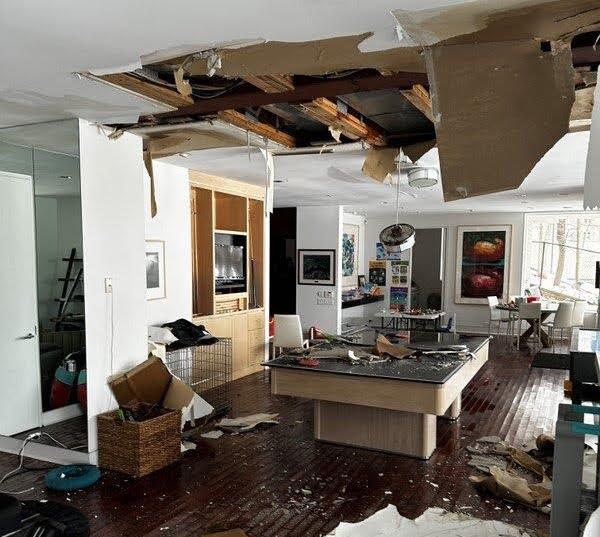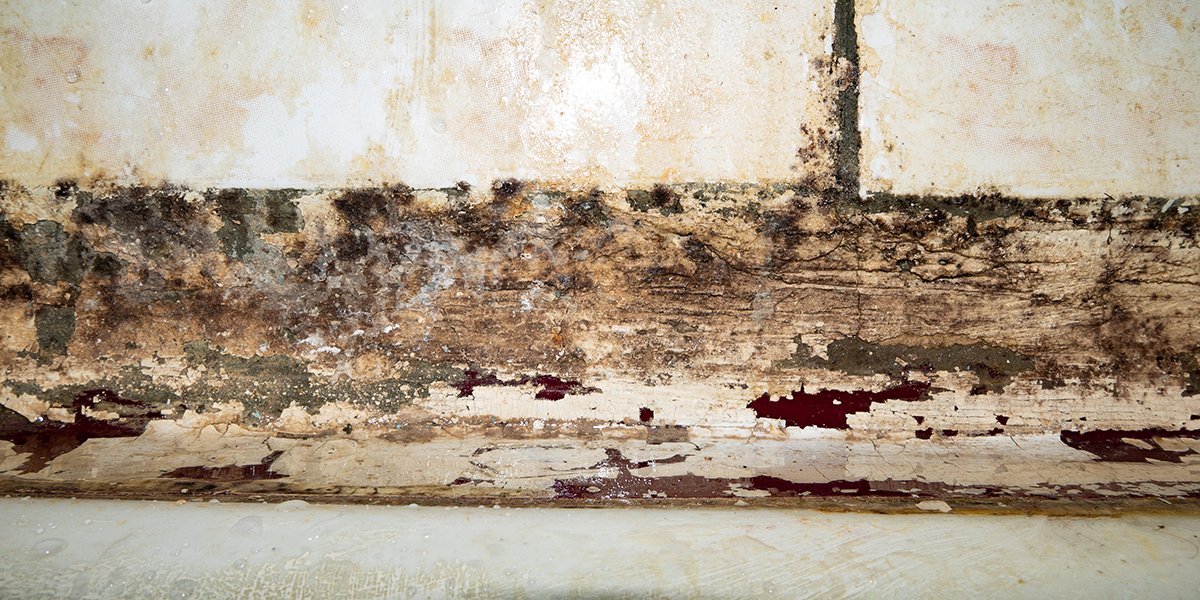Trusted Water Damage Repair Services for Residential and Commercial Properties
The Refine of Water Damage Cleaning: Guaranteeing Your Home Is Recovered Successfully
Water damages can be a difficult challenge for property owners, requiring a organized and careful clean-up procedure to bring back security and capability. Initially, an extensive assessment is critical to determine the extent of the damages and determine the ideal removal actions. Following this, effective water extraction methods play a critical duty in alleviating further harm. The subtleties of drying out, sanitizing, and ultimate restoration are just as essential and typically forgotten. Recognizing these phases can make a significant difference in the result of your home's remediation, motivating a closer consider what each step involves.
Analyzing the Damage
Upon finding water damage, the primary step is to thoroughly assess the level of the impact. This initial evaluation is essential, as it aids figure out the essential steps for efficient cleanup and remediation. Begin by examining the impacted locations, consisting of wall surfaces, ceilings, floorings, and personal items, to identify the resource of the water intrusion, whether from flooding, leaks, or condensation.
Documenting the damage is essential for both insurance policy cases and preparing restoration initiatives - damage restoration services. Usage photographs and created notes to capture the severity of the damages, noting any affected architectural aspects and materials. Pay unique interest to areas that might not be instantly noticeable, such as behind wall surfaces and under carpets, as hidden dampness can bring about more difficulties, including mold and mildew growth
Additionally, analyze the timeline of the water direct exposure. The longer the materials stay wet, the higher the capacity for damage. Understanding the duration of exposure will certainly educate the seriousness of removal initiatives. Ultimately, an extensive analysis lays the groundwork for a successful water damages cleaning procedure, making certain that all affected locations are resolved successfully and thoroughly.
Water Extraction Strategies
.jpg)
Professionals generally use submersible pumps for larger quantities of water, which can swiftly minimize flooding in cellars or other impacted locations. For smaller sized amounts, wet/dry vacuums are frequently utilized to extract recurring moisture from rugs and tough surface areas. Furthermore, using portable extractors enables targeted removal in restricted rooms or locations with delicate products.
In circumstances of contaminated water, such as sewage or floodwater, progressed removal strategies may include using biohazard tools to ensure safety and security and compliance with health and wellness guidelines. High-powered removal tools are crucial in lessening water retention in architectural products, which can bring about mold and mildew growth and structural damage otherwise resolved quickly.
Inevitably, the efficiency of water extraction strategies plays a critical function in the general success of the water damages cleanup procedure, laying the foundation for succeeding restoration initiatives.
Drying and Dehumidification
As soon as standing water has actually been properly extracted, the following critical stage in the water damage cleanup process is drying out and dehumidification. This action is vital to protect against more damages and mold growth, which can happen within 24 to 2 days in moist atmospheres.
To achieve effective drying, specific devices such as industrial-grade air movers and dehumidifiers is employed. Air moving companies distribute air throughout damp surfaces, enhancing dissipation rates, while dehumidifiers lower moisture degrees in the air, advertising a favorable environment for drying out. The mix of these tools ensures that moisture is extracted from floorings, wall surfaces, and furnishings, permitting them to dry extensively.
It is essential to check the drying procedure carefully. Experts typically utilize dampness meters to examine the moisture material in numerous materials, ensuring that all impacted locations reach appropriate dryness levels. This thorough method assists to avoid surprise moisture pockets that might bring about architectural damage or harmful mold growth.

Cleaning and Disinfecting
After the drying out and dehumidification stage is complete, the next crucial action in water damages cleaning is cleaning and sanitizing the impacted areas. This process is critical to prevent the growth of mold, germs, and various other microorganisms that prosper in wet settings.
The this content cleansing stage commonly involves eliminating any type of debris, dirt, and pollutants from surface areas making use of specialized cleansing representatives. For tough surface areas, a combination of soap and water or commercial cleaning products is often employed. Soft products, such as upholstery and carpetings, might require extra comprehensive cleaning methods, consisting of heavy steam cleansing or deep extraction techniques, to guarantee detailed sanitation.

Sanitizing adheres to cleansing, using EPA-approved disinfectants to eliminate hazardous microorganisms. This action is necessary, especially in locations that may have come into call with floodwaters or sewage, as these resources can pose significant health and wellness dangers.
Additionally, it is very important to resolve any kind of staying odors, which might require using smell neutralizers or innovative strategies like ozone therapy. Proper cleansing and sanitizing not only recover the safety and health of your home but additionally prepared for effective restoration and fixings in subsequent phases of the water damage cleaning procedure.
Restoration and Repair Services

Once the evaluation is total, reconstruction efforts can begin. This normally entails repairing or replacing damaged materials, making sure that all job adheres to local building codes and requirements. For example, if drywall has actually been endangered, it will certainly require to be gotten rid of and replaced with new material. Furthermore, flooring may need comparable interest, relying on the degree of water direct exposure.
It is critical to involve experienced restoration specialists throughout this process, as they possess the experience to handle intricate repair services effectively. In addition, they can aid alleviate prospective future issues, such as mold and mildew development or structural instability, thus making certain a habitable and risk-free living environment. Ultimately, efficient restoration and fixings recover the home's honesty and improve its overall worth.
Verdict
In conclusion, the process of water damages clean-up is crucial for restoring a home to its pre-damage problem. Each stage, from analyzing the damages to implementing reliable water extraction methods, followed by detailed drying out, sanitizing, and needed repairs, plays an essential useful source function in guaranteeing safety and security and compliance with structure standards. Efficient implementation of these steps not just mitigates instant damages but likewise boosts the long-lasting honesty and value of the property.
Water damage can be a daunting challenge for property owners, requiring a careful and organized cleaning procedure to restore safety and functionality. Ultimately, an extensive evaluation lays the foundation for a successful water damage cleaning procedure, making certain that all influenced areas are dealt with efficiently and thoroughly.
Effective water extraction strategies are important in alleviating damages and avoiding further complications following a water breach occasion.In verdict, the process go to these guys of water damage cleaning is essential for recovering a home to its pre-damage condition. Each phase, from assessing the damages to carrying out efficient water extraction strategies, adhered to by thorough drying out, sterilizing, and necessary fixings, plays an essential duty in making sure security and conformity with structure standards.